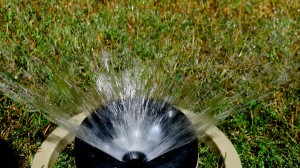
By Brad Crofford, Editor-in-chief
Oklahoma has been experiencing a severe drought. According to the US Drought Monitor, 92 percent of Oklahoma was rated as having extreme drought and 37 percent as exceptional drought. From least severe to most severe, the scale goes moderate, severe, extreme, exceptional.
While the availability of water on campus has not been affected by the drought, the university has lost some trees and other plants because of the heat and lack of water.
Some students have suggested on social media that the university’s use of its sprinkler system in January in the middle of a drought is wasteful. Ron Lester, Director of Facilities Management, explained in an email response to The Echo how the university’s grounds are irrigated.
“We make every effort to be conservative in our usage of water. Our Grounds Manager, Brett Benson, does a great job of only giving the grass the water it needs to thrive and not over watering, which has not always been the practice here. We have been trying to improve the watering policies and schedules in the past few years to be more conservative and to water mostly at night, when it is most efficient,” Lester said.
Lester then pointed out that sometimes watering occurs during the day in order to avoid freezing temperatures at night. This helps avoid ice hazards. This system uses sensors to help improve safety and efficiency.
“We also have sensors on our irrigation stations that are supposed to shut the system off if there has been sufficient rain or if the temperature is near freezing,” Lester said “Occasionally, we get caught with one of these not working properly and have sprinklers coming on when they shouldn’t be.”
The university’s irrigation costs are also kept low by the way in which it obtains its water.
“All of our irrigation water on campus comes from wells and our main cost for irrigation, other than the maintenance of the system, is to power the pumps,” Lester said.
As a further sustainability measure, several underground reservoir tanks were installed under Hills when it was built. The water from the roof then drains into these tanks and is used to water the grounds around Hills.